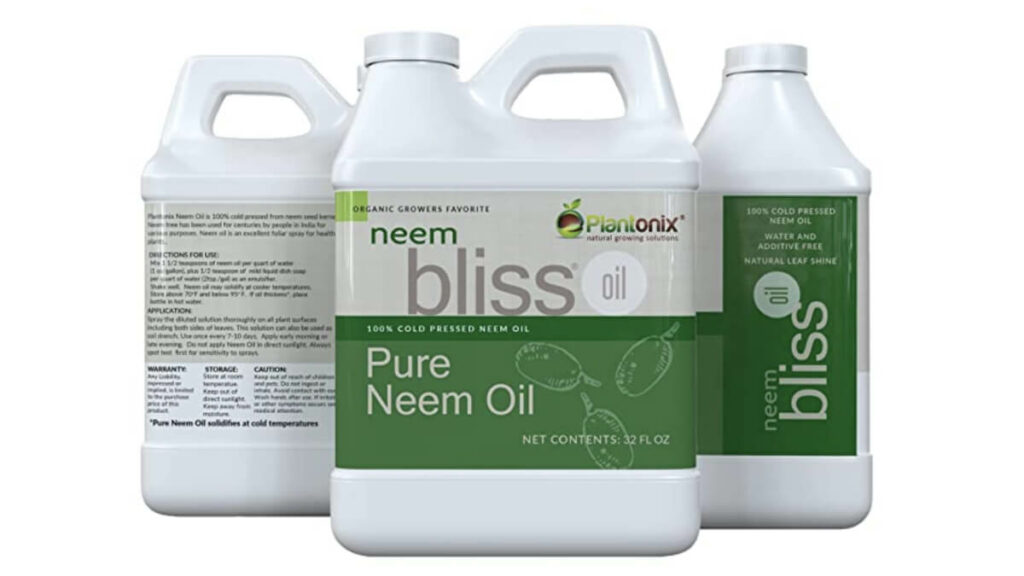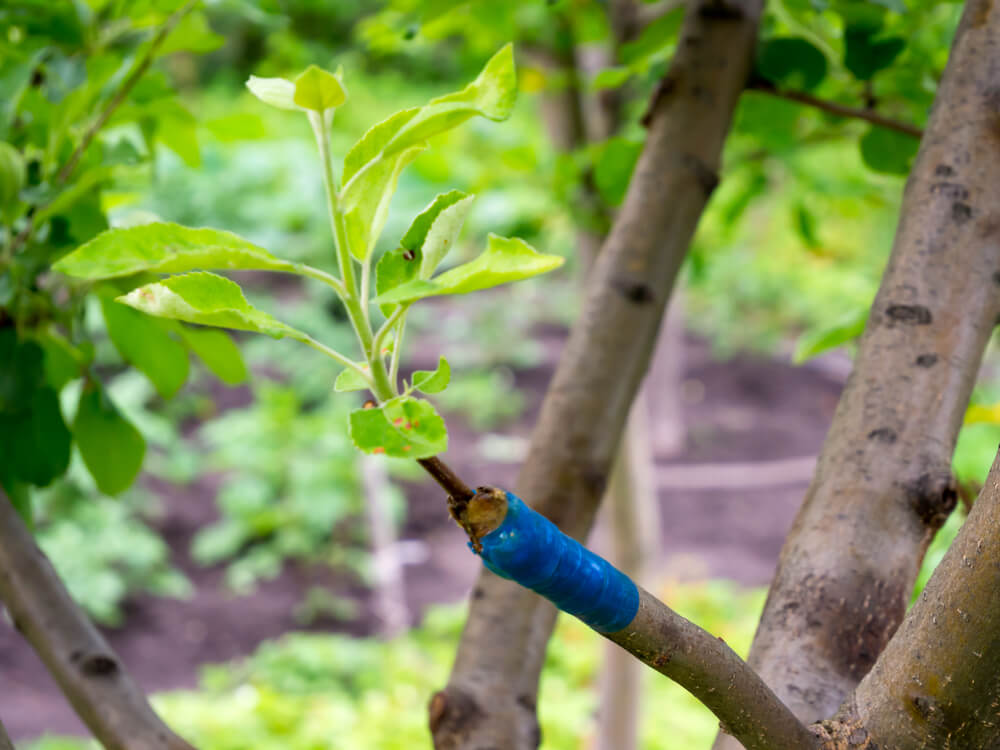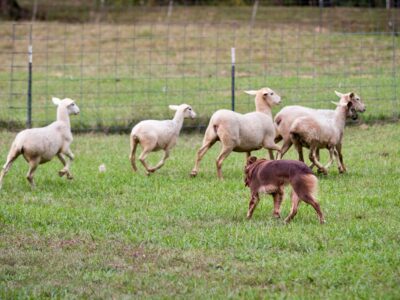I don’t know about you, but growing organic fruit is important to me, and so is getting a healthy harvest; luckily, we don’t have to trade one for the other!
Once you identify the fly or bug damaging the blossom and boring holes in the fruit, you can learn how to apply and when to spray fruit trees with organic fungicide, insecticide, copper or dormant oil for a healthy harvest. Read on to learn how!

Note: This blog post has been updated to include three podcast episodes on fruit tree care and maintenance. Two are solo episodes where I share the tips I’ve gleaned over the years, and the most recent episode (found at the top of this post) is with Susan Poizner, who I’ve had on the podcast before to talk about how to grow fruit trees.
Over the years, multiple listeners have asked about organic methods, so download each of these podcasts and listen to them at your leisure!
Table of Contents[Hide][Show]
Fruit Trees for the Homestead
Whether you have a vast orchard or grow fruit trees in pots, it’s a smart addition to any homestead. I love plants that I just have to purchase once and receive bountiful harvests year after year in return.
Growing fruit trees has a learning curve, and knowing how to plant fruit trees and plant a fruit tree guild is important for a thriving orchard. Once your orchard is established, regular maintenance, such as pruning fruit trees and protecting them from disease and pests, should be next up.
Disease Resistant Fruit Trees
Technology can be such a wonderful thing because there are now certain varieties of fruit trees that are disease-resistant. If you’re new to growing fruit trees, you may want to consider purchasing varieties resistant to some of the common problems in your region.

Healthy Trees are Resistant Trees
Susan mentions multiple times that the best prevention for diseases is proper tree pruning. A healthier tree is more resistant and resilient to pests.
The same goes for our own bodies. If we feed our bodies well and take care of them, our immune systems are strong and we’re less prone to illness. Or, if we do get sick, we are often affected less severely than those with a compromised immune system.
Entomologists have actually studied that this is the same with trees. If plants have enough sugars in them and are photosynthesising properly, pests tend to leave those trees alone.
Susan says pests are like the bully in the schoolyard, they’ll pick on the weak kids, not those who are big and strong.

Molasses Treatment
Molasses is like a superfood for fruit trees. It contains all the minerals and nutrients that fruit trees need to photosynthesize correctly.
To use a molasses treatment, in the spring, when your trees are first producing leaves, mix two tablespoons of molasses with about a cup of warm water until the molasses dissolves. Then mix that with one gallon of water and spray your fruit trees.
If you return the next day, you will visibly see that the leaves are greener. Furthermore, if you do this on a weekly basis, you’ll be harvesting loads of healthy fruit. Learn more about fertilizing your fruit trees for better health on Susan’s podcast, Orchard People.

Fruit Tree Maintenance Tips
Knowing when to spray your fruit trees is essential to a healthy harvest. These easy preparation tips will get you on your way to achieving this task with a better end goal.
Tip #1 – Clean Up & Pruning
It’s important to do a really good cleanup around your trees as a preventative measure. This is essential whether your trees show signs of infestation or disease or not!
If the tree does have an issue, the leaves or fruit that dropped from the tree can harbor these insects, larvae or pathogens.
Be sure to remove any fruit mummies. Fruit mummies are shriveled fruit still hanging from the tree. They can harbor disease.
You should remove any debris from an infected tree from your property so no further contamination takes place. Don’t put it in your compost pile since spores, like fungus, spread easily and are hard to kill. You don’t want it to infect your compost and other plant life, so it’s best to burn the leaves and fruit or seal them in black garbage bags and dispose of them.
Pruning is also part of proper cleanup. It’s not only to keep a small and tidy tree; it also ensures plenty of airflow and makes it harder for pathogens to grow and spread. If you live in the Pacific Northwest or in areas where your winters are more on the damp side, you may want to consider summer pruning. You can learn more about when to prune fruit trees here.

Tip #2 – Identify the Disease or Pest
Once you identify the pest or disease, know if it can survive freezing temperatures and learn the life cycle or when it lays its eggs, you can get busy treating the issues. Let’s look closely at some common pests and diseases that can have a negative impact on fruit trees.
- Aphids – These tiny pear-shaped insects suck the sap from the leaves they are hiding under, causing them to curl and distort. To control aphids, you can use organic insecticidal sprays specifically formulated to target these pests.
- Codling Moth – This notorious pest infests apple and pear trees, causing damage to the fruit as larvae tunnel inside. Apply organic insecticidal sprays during the moth’s flight period to prevent infestation.
- Brown Rot – This fungal disease affects stone fruit trees, such as peaches, plums, and cherries. Organic fungicide sprays can help prevent and control brown rot, especially during periods of high humidity.
- Apple Scab – This fungal disease causes dark, scaly lesions on apple tree leaves and fruit. Regular applications of organic fungicide sprays can effectively manage apple scab.
- Fire Blight – This bacterial disease affects a variety of fruit trees, including apples, pears, and others in the Rosaceae family. Prune infected branches and apply organic antibacterial sprays to manage fire blight effectively.

Tip #3 -Treat the Tree
Susan mentions multiple times that the best prevention for disease is proper pruning of your trees. A healthier tree is more resistant and resilient against pests.
The best time to treat a tree for disease is right when you see signs of a problem. If you can learn the types of diseases that your specific variety gets, you can keep an eye out and generally catch problems earlier.
Susan mentions there are about seven main diseases that are common to fruit trees (some vary based on variety).
However, sometimes we don’t necessarily know what we’re fighting, but we can tell the tree is sick. Susan says that 80% of diseases that fruit trees get are fungal. Funguses like dark, damp environments (which is why pruning is half the battle).
The best fungicide and bacteriacide is air. Good air circulation and sunlight can prevent a whole host of diseases.
Use Organic or Natural Treatments
When you need to reach for treatments, always grab an organic or natural option. Remember, we’re growing crops we hope to enjoy ourselves, so we don’t want chemicals on our fruit!
Once you know what you’re treating for, spray the tree so that you saturate the entire thing. The entire trunk, branches and all. You don’t want to leave a window of opportunity open for it to reinfect itself.
For example, the organic peach tree spray I’m using to treat peach leaf curl is this organic copper spray concentrate. To apply, I completely saturate the tree with the organic spray twice yearly until no more signs of disease are present.
I schedule a spray after ninety percent of the leaves drop in the Fall (before our typically wet winters set in) and again in the Spring right before budding. If you have drier winters, a thorough Fall application should be sufficient.
Susan shares that she uses a dormant oil mixed with a lime sulphur mix and coats the tree in the fall, once the tree goes dormant.
For more tips on treating various diseases or preventing pests, be sure to listen to the podcast interview between minutes 37:17 and 49:57.
Tip #4 – Safety First
Even though we only use organic sprays, it’s important to use caution for yourself and other things like pets and farm animals. Spray in the morning when there is no chance of rain and when it isn’t windy because we don’t want to inhale it or get it in our eyes.
You’ll want to wear protective clothing such as long-sleeved shirts, pants, boots, gloves and safety glasses. We also want to be mindful of our pollinators and honey bees. If you are spraying where there are blossoms, it’s important to spray in the evening instead.
Tip #5 – Reapply Organic Fruit Tree Spray Schedule
You’ll apply the spray in the Fall and reapply in late Winter or early Spring, right when the leaf buds come out. You’ll apply the spray to some trees when they blossom and others after they blossom.
That is why it is essential to identify what you’re dealing with so you can mark on your calendar when you need to apply based on the life cycle of the disease or pest.
Check out my Family Garden Planner to keep your personal fruit tree spray schedules organized. It also helps you keep track of your specific gardening needs.

The Best Fruit Tree Spray
It’s important to note that I love using Neem Oil for organic pest control in the garden. This general-purpose wonder is great on fruit trees, vegetables and herbs. When using this or another organic spray, ensure it is 100% organic.
You want to be sure you’re using cold-pressed 100% Neem Oil because many products say that they are natural or that they use Neem Oil, but if you look at the ingredients, they have other synthetic ingredients and often other pesticides that are not considered organic.
This is the Neem Oil I use that is straight cold-pressed Neem oil only (note: this is a concentrate, so it will last you a long time and can also be used on fruit trees!) I also have this sprayer to use when applying the neem oil to plants and trees.

Understanding Growth Stages
When selecting sprays, it is important to consider their compatibility with the stage of fruit development and any potential harm they may cause to beneficial insects.
Many organic fruit tree sprays are designed to be safe for pollinators and beneficial insects when used according to the instructions, protecting your fruit crops without harming the ecosystem.

Dormant Season
During the dormant season, dormant sprays play a crucial role in maintaining the health and vigor of fruit trees. This dormant period typically occurs in winter or early spring when the temperature drops to around 40 degrees Fahrenheit or below.
One of the most common sprays is dormant oil, which effectively controls overwintering pests and diseases. This horticultural oil smothers and suffocates harmful insects and their eggs, preventing them from causing damage during the growing season.
The application of dormant sprays, such as Neem oil, during this period, can help break the pest and disease cycle, reducing the risk of infestations in the coming months. It is important to note that dormant sprays should be applied when the tree is completely dormant before any new growth appears.

Bud Break
As the weather warms up (typically when temperatures reach around 60 degrees Fahrenheit), buds begin to break. This is a crucial stage in fruit tree development.
During bud break, when the first signs of new growth emerge, fruit trees become susceptible to pests and diseases. The time buds start to open, revealing the delicate structures that will eventually become flowers and fruit. You can treat them with an organic general-purpose tree spray to safeguard health and productivity.
When choosing tree sprays for bud break, select an organic general-purpose product that is suitable for your specific fruit tree varieties. Most tree sprays contain a combination of insecticides, fungicides, and sometimes even miticides. This comprehensive approach allows broad-spectrum protection against common pests like aphids, caterpillars, and mites, as well as fungal diseases like powdery mildew and rust.
During bud break and throughout the growing season, keep an eye out for any abnormal signs like deformed leaves, discoloration, or pests. By promptly responding to any issues, you can take the necessary steps to protect your fruit trees and ensure a successful harvest.

Petal Fall
During petal fall, the flowers shed their petals, and the fruit begins to form. The petal fall phase is a critical time when the young fruit is susceptible to pests and diseases.
Consult with your local agricultural extension service or a horticulture expert to determine the most suitable sprays for your specific tree variety and location.
Remember that the timing and frequency of sprays during the petal fall stage may vary depending on factors such as the regional climate, tree variety, and pest prevalence. Monitoring your fruit trees regularly and adjusting the spray schedule as needed will help you maintain the health and vitality of your trees throughout the growing season.

Fruit Development
Fruit develops quickly, and as it grows and ripens, it becomes even more appealing to pests such as insects and diseases like fungal infections. These intruders can damage the fruit, resulting in reduced yield or even complete loss.
Organic fungicide sprays can prevent or control fungal diseases affecting the fruit, such as powdery mildew, rust, or fruit rot.
Similarly, insecticidal sprays can effectively control and eliminate insect pests that may attack the developing fruit. Insects like aphids, caterpillars, or fruit flies can cause significant damage, leading to deformities, discoloration, or premature fruit drop. You can keep these pests at bay and protect the fruit by applying organic insecticidal sprays at the right time.

Additional Pest Control Methods
In addition to spraying your fruit trees, there are additional methods you can adopt to protect your fruit trees from pests.
- Beneficial Insects – These natural predators can be introduced to your orchard to prey on common pests, providing natural pest control. Ladybugs, Lacewings, and parasitic wasps are examples of beneficial insects that can help keep pest populations in check. Research the specific pests affecting your fruit trees and find the appropriate beneficial insects to combat them.
- Traps – Sticky traps, pheromone traps, and fruit fly traps are effective ways to lure and capture pests. Some traps hang in the tree, attracting the flies and trapping them and their eggs. These yellow sticky traps seem like another great option and may be more user-friendly. By strategically placing these traps around your trees, you can monitor pest activity and reduce their populations. Regularly check the traps and dispose of captured pests to prevent further infestations.
- Lures – Beyond using traps (like these “sticky balls” that I use for apple maggots – pictured above), Susan recommends first wrapping the ball with saran wrap and then spreading it on the tanglefoot paste. This way, when the trap is full, you can simply remove the saran wrap, re-wrap it and start again. Susan takes it one step further and adds a lure for the known pest on one of the traps. This sends out a pheromone that makes the male insects think there is a female around, and it will catch all those male insects.
- Bagging – Another method to try is bagging the apple in its immaturity. This method is ideal if you have younger trees and not multiple trees. If there are too many, it would be a huge undertaking to bag the apples. You can simply use those little pantyhose socks that you use at shoe stores or mesh craft bags.
- Deterring Predator Pressure – Regarding predator pressure, such as birds and deer, netting and fencing have been very effective on our homestead. It’s not always realistic to net or fence around your fruit trees, and in this case, I have found that having dogs also helps deter the birds and deer from competing for our harvest.

Resources
Episode #207
- Episode #205 How to Care for Berry Plants in the Fall (to increase next year’s harvest)
- Episode #203 5 Tips for Organic Pest Control for Vegetable Gardens
- The Family Garden Plan
Episode #383
- American Blossom Linens Coupon Code: PioneeringToday20
- Pioneering Today Waitlist
- Planting a Fruit Tree Guild
- Verse of the Week – 2 Timothy 2:15
Where to Find Susan Poizner
You can learn more from Susan over at her website Orchard People and catch her podcast with the same name. She’s a wealth of information about growing and caring for fruit trees in a backyard or small homestead setting.
You can also grab Susan’s free eBook, Grow Fruit Trees that Thrive on her website, then follow her on Facebook and YouTube as well.

Other Posts You May Enjoy
- How to Grow Fruit Trees
- Planting a Fruit Tree Guild
- Growing Nut Trees (What You Need to Know)
- Growing Fruit Trees in Pots (Tips For Success)
- Heirloom Apple Varieties & Saving Them for Future Generations
- The Family Garden Planner




